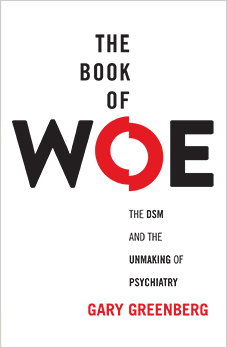First Richard Friedman admits that the neurochemical imbalance is a myth. Now Nancy Andreasen tells The New Yorker that the biological revolution was oversold. Is that the Four Horsemen I see coming around the corner?
Andreasen isn’t just any psychiatrist. She has been one of the leading neuromantics of the past thirty years. She is the author of books like Brave New Brain, The Broken Brain, and The Creating Brain (detect a theme here?), and has made a career of breathless proclamations of psychiatry’s scientific triumph over the scourge of mental illness. In 1984 (!) she enthused that “The biological revolution in psychiatry has already occurred.” And in a way she was right. By then, psychiatrists and bureaucrats had already convinced each other that now that they had drugs that could treat serious mental illness, it would be a good idea to empty the psychiatric hospitals and scatter their patients to the streets of American cities to be treated as outpatients.
Four years later, fresh off that triumph, drug companies brought Prozac and then Paxil and Zoloft to market, and soon enough 20 percent of the American citizenry was taking psychiatric drugs to treat those biochemical imbalances that nearly all of us believed in. In the meantime, as Freudian theory was bashed by everyone from a retired Berkeley professor of English to the author of the DSM-III to Peter Kramer, the idea that psychological symptoms had actual meaning, that the things people thought and felt and said were something more than the random noise generated by the broken brain, and that people who treat the mentally ill should actually listen to what they have to say–that idea all but disappeared in favor of listening to the drugs and to the brains they theoretically treated.
Viva la revolucion.
All along, of course, people (including me) have been counseling restraint, wondering if it was really a good idea to deprive the mentally ill of their refuges, or to incorporate psychoactive drugs into our daily diet, or to tell the people over and over again about chemical imbalances that were invented in marketing departments rather than discovered in the lab (especially when the measured results of the treatments were equivocal at best) or to abandon the notion that what we think and feel and say is meaningful, and in so doing to undermine a notion of human agency that in its half millennium had brought us democracy, science, technology, and the notion of universal human rights. For their note of caution, these people were routinely diagnosed: as ignorant dead-enders, as Popes against Galileo, as guild members fighting for market share, as counter-revolutionaries standing in the way of progress.
And now, in a New Yorker piece about how the content of delusions seems to be changing with the times (and how could it not? Schizophrenic people in ancient times didn’t have a CIA to worry about, so they heard God’s voice instead) and therefore may indeed be of interest, Andreasen says the biological revolution went too far. “You can’t treat a person as a purely biological creature,” she says. Which is pretty obvious to you and me, but when you’ve made your living saying (and doing) (and encouraging your peers to do) the opposite, it can be an epiphany.
Now, it would be nice if Andreasen took a page out of Al Frances’s book and acknowledged her role in the overselling of biological psychiatry, or at least showed some understanding of the vast disaster it has caused in some people’s lives, and,. in a diffuse way, in society at large. Where is the remorse for having let herself get so carried away? Where is the acknowledgment of the effects of this mistake?
On the other hand, Antonio Egas Moniz didn’t return the Nobel he won in 1939 for inventing the transorbital lobotomy.
Maybe Andreasen did make a thorough account of herslef this and the New Yorker chose not to report it. But I sort of doubt it. Because listen to her explanation of why it might be a good idea to treat a person as, well, a person.
When you have a therapeutic relationship, you can manage the dosage better. You can talk to the patient about their side effects. Compliance goes up. The patient gets better more quickly.
It’s important to have a “therapeutic relationship,” in other words, so you can get better at prescribing drugs. Listening to the patient is just another way of listening to Prozac, which is just another way of listening to the brain, which, poor broken thing, is stuck trying to communicate with language. The rediscovery of the patient is only in service of making the revolution more efficient, or at least as efficient as it can be while we await the day we can cut out middleman completely.
And while I don’t want to bite the hand that feeds me occasionally too hard, I have to point out that the New Yorker, in turning to Andreasen and Ben Sadock and Joel Gold to enunciate the return of the repressed (not to mention in choosing such a fluffy example, the Truman Show syndrome) has sort of missed the boat here. Not that I have anything against them (and Sadock in particular has been very cordial in email with me), but they appear to be just discovering (or rediscovering) the idea that content has meaning and are hardly the most effective or knowledgeable advocates of that idea. Meanwhile, people like Gail Hornstein have been writing about the importance of the content of delusions for years–and not just to say that they draw from the well of popular culture or that they have value as therapeutic adjuncts, but that they can help us understand the delusional person and maybe even help him or her. Or Mary Olson and Jaakko Seikkula, who are old hands at taking the psychotic person as more than the unfortunate victim of a broken brain. Listening to them–now, that would be a revolution.















